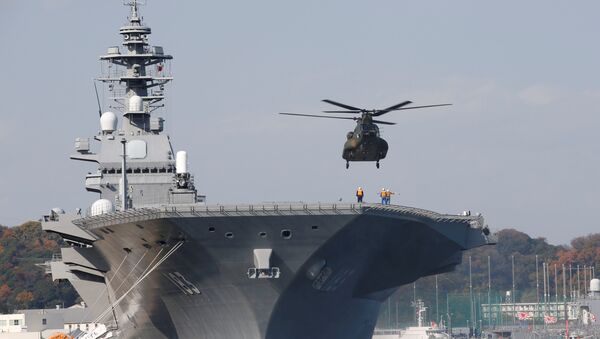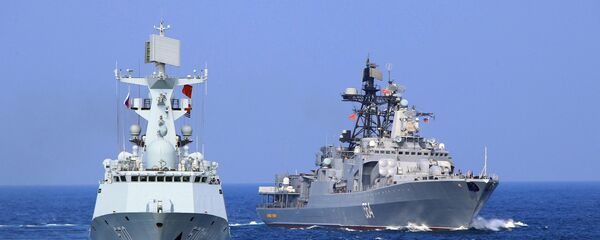In July the 24,000-ton warship is set to hold joint naval exercises in the Indian Ocean, with ships from the navies of the US and India. Prior to that it will have stopovers in Sri Lanka, the Philippines, Singapore, and Indonesia, before returning to Japan in August.
One unidentified source, wishing to remain anonymous, remarked, "The aim is to test the capability of the Izumo by sending it out on an extended mission…It will train with the US Navy in the South China Sea."
Roughly $5 trillion in sea trade passes through the resource-rich region, which features gas and oil deposits as well as fertile fishing grounds.
Current disputes in the South China Sea center around territorial claims by China, Malaysia, the Philippines, Brunei, Taiwan, Malaysia, and Vietnam, but Tokyo’s dispute with Beijing lies in the East China Sea.
Last year, Chinese Ministry of Foreign Affairs spokesman Hong Lei cautioned that "Japan should reflect upon rather than forget what it has done during the aggression, act and speak cautiously on issues concerning the East China Sea and the South China Sea, and make more efforts to increase mutual trust with its neighbors and promote regional peace and stability instead of sowing discord."
Philippine President Rodrigo Duterte, who has struck something of an uneasy friendship with China as he has tried to shift Manila’s dependence away from Washington, has been invited aboard the Izumo when the helicopter carrier makes a port call about 100 km west of Manila, in Subic Bay.
The move is Tokyo’s biggest show of naval force since World War II, and comes as US President Donald Trump attempts to take a hard line with Beijing, denouncing China’s buildup of military installations on artificial islands the country has constructed in the South China Sea.
When evidence of the installations was displayed in satellite images, the Chinese defense ministry defended their actions, calling the buildup, "legitimate and lawful," and asking, "If someone makes a show of force at your front door, would you not ready your slingshot?"
In January, after White House Press Secretary Sean Spicer spoke of defending "international territories" in the South China, Beijing asserted that it had “irrefutable” sovereignty over the islands.
In a news briefing following Spicer’s comments, Chinese Foreign Ministry spokeswoman Hua Chunying said that "the United States is not a party to the South China Sea dispute," adding, "We urge the United States to respect the facts, speak and act cautiously to avoid harming the peace and stability of the South China Sea."





